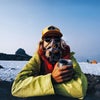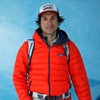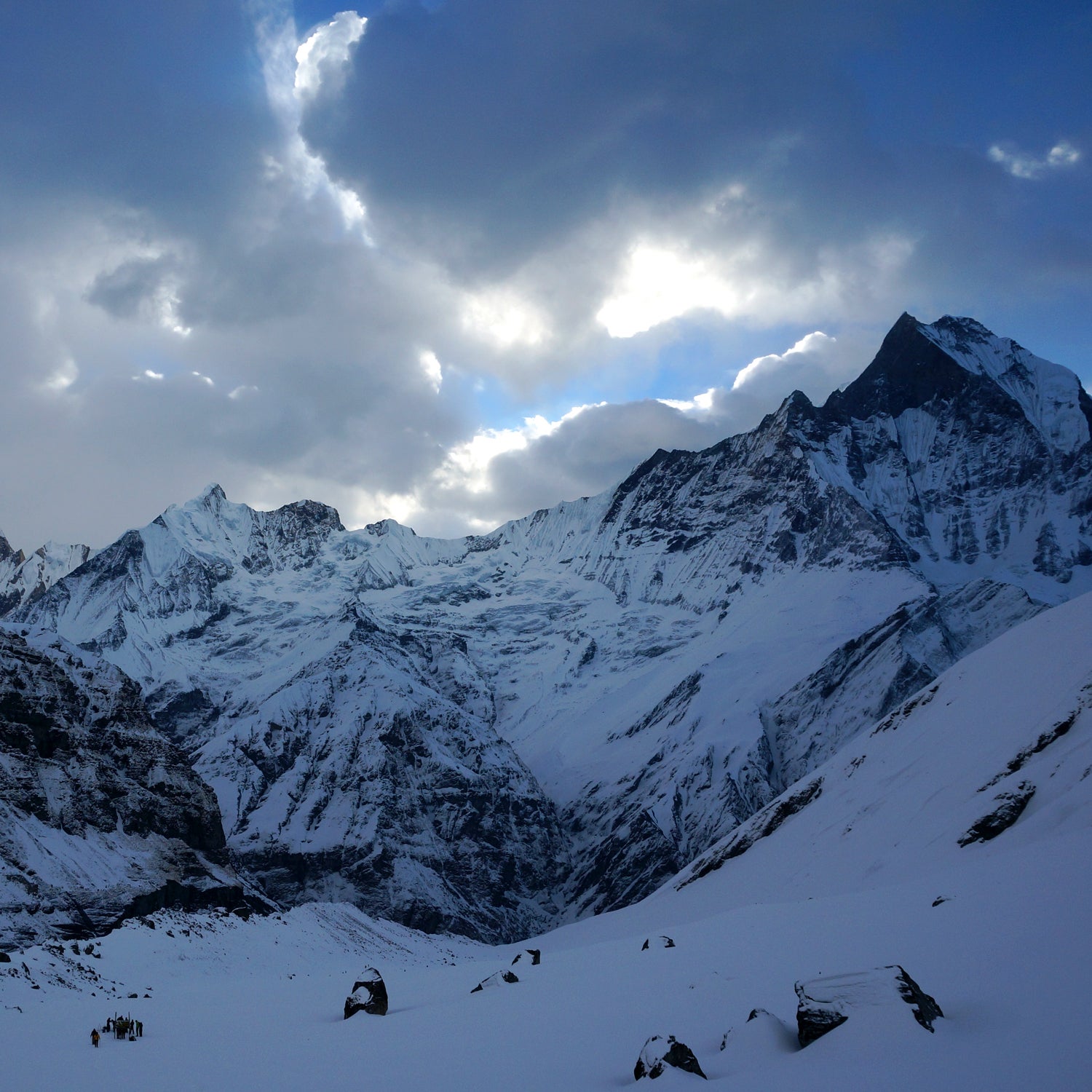Three days after Saturday’s earthquake, all of the Everest climbers who had been stuck in Camps I and II have been flown down to Base Camp or beyond. In Kathmandu, people who were injured in the avalanche that struck Base Camp are beginning to get their bearings.
Rainier Mountaineering’s Dave Hahn, who had been trapped with his team and another roughly 180 climbers at Camp I, .��
“We each walked slowly through the obliterated camps, stopping to understand how much force had bent this or that bit of steel,” he wrote. “We finally understood the enormous death toll and the nature of the numerous injuries to the survivors.”
The evacuation required roughly 30 helicopter sorties over the Khumbu Icefall. Hahn, in his account, mentions that he was flown by Jason Laing, the same Kiwi Simrik Air pilot who performed most of the body recovery flights last year in the Icefall.
In the courtyard of Kathmandu’s Yak & Yeti Hotel, New York–based filmmaker Michael Churton explained how he’d been injured in the avalanche. “I just buried myself as best I could,” he told the Washington Post. “Everything was gone. All our tents were gone. . . We’re missing one person, and we don’t know if she’s alive or dead.” Churton, a filmmaker and producer who worked on last year’s Discovery/NBC production surrounding base jumper Joby Ogwyn, was documenting this year’s season from the Madison Mountaineering camp. The missing woman he described was New Jersey–based physician’s assistant Eve Girawong, who was confirmed dead yesterday.
But as the stories of what happened on Mount Everest resolve into clarity, the tales from the less digitally connected mountains of the Nepalese Himalayas are only beginning to come to light. Many serious alpinists prefer these other areas to Everest and tend to travel lighter, without the cumbersome communications equipment that’s so common in Everest Base Camp.
Langtang, due north of Kathmandu and roughly 100 miles closer to the quake’s epicenter than Everest, was completely devastated by landslides that followed the quake. The Langtang Valley, extremely steep and narrow, is another popular trekking and climbing destination. Though there are no 8,000-meter peaks in the area, 26,289-foot Shishapangma sits just over the border into Tibet.
Bibek Khadka of Simrik Air told a local news outlet that villages up and down the Trishuli River had simply vanished: “While on our way to Syafrubeshi from Ghoda Tabela in Rasuwa, we saw some villages completely washed away by landslides while some others looked like deserts due to landslides.”
At the upper end of the Langtang Valley, Washington-based alpinist Colin Haley phoned his mother Terrin to let her know that he, his climbing partner, Frenchman Aymeric Clouet, and Clouet’s pregnant wife had all survived and were in no immediate danger. Ms. Haley emailed Alpinist magazine to relay the information. According to the , the villages suffered heavy casualties and Haley planned to stay and help while those injured were airlifted.��
huge amount of climbers waiting heli evacuation in base camps.
— Northmen PK (@NorthmenPK)
Makalu, which sits 14 miles southeast of Everest and at 27,825-feet is the world’s fifth-tallest mountain, was also the scene of serious avalanche activity. In a widely circulated video uploaded from the mountain’s advanced base camp (ABC), Indian mountaineer Arjun Vajpal reported that there were “quite a few big avalanches coming down…and quite a bit of rock fall.”
Adrian Hayes, a British climber, posted to Facebook that as he was descending to ABC from Camp I he felt “the mother of all avalanches,” though he was unable to see through the whiteout conditions.
A blog post on the website of Swiss outfitter Kobler and Partners indicated that the avalanche had come from Makalu’s north col. In the same post. Kobler’s office confirmed that everybody on the mountain was safe. In more recent videos, Vajpal also confirmed that everyone had made it back to base camp from higher on the mountain. A Facebook post from the The Belgian Makalu 2015 Expedition indicated that there were roughly 45 climbers on Makalu this spring.
Makalu 2015 – Nepal Earthquake. Everyone on Makalu is safely back in Advanced Base Camp at 5700m after the 7.9 magnitude…
Posted by on
On Annapurna, the world’s tenth-highest mountain at 26,545 feet, Canadian climber Al Hancock phoned home and left a voicemail describing a near-miss high on the mountain, in which he “had to use knives” to get out of his nearly buried tent. Hancock’s publicist emailed an audio file of the call to ���ϳԹ���.
Part One:
Part Two:
“We were at basecamp … the sound that we heard was deafening, the whole mountain shook. The ground shook, people were running for their lives … It was a very scary experience. It’s a scary place to be. It’s a scary time … On the 23rd. we tried to make a summit attempt from Camp 4. Bad weather was coming in, and we had to turn around. We got back to Camp 4 and crawled in our sleeping bags to rest up and got hit as we were sleeping in a major avalanche. If it had lasted another four seconds, I wouldn’t be talking to you. I’d be buried alive along with my teammates. We had to cut ourselves out with knives … our team descended down to camp 3. We had another teammate who would be dead today, he was in rough shape, we had to do a rescue from Camp 4 to Camp 3, myself and two sherpas … We got him on oxygen … and the next morning we had a helicopter come in and do a long line rescue … to base camp … he’s in Kathmandu doing fine.”
It’s still unclear how many people were on Annapurna at the time of the avalanche.
American climber Alexander Barber described the same scene on his website:
“The earthquake was so forceful, it felt as if we were inside a snow globe being shaken by God. The storm kept us from seeing much but we could hear avalanches ripping down everywhere. The roar was so loud I thought we’d surely be hit … At Base Camp, I found out that an avalanche had hit the team at camp 4 earlier that night. No one was hurt but they had to cut their way out of their tents.”
Also on Annapurna was Washington-based Jess Roskelley, son of pioneer American alpinist John Roskelley. The Spokesman Review, a newspaper in Spokane, Washington, reported that “Jess Roskelley, who’s on a filming expedition to climb Annapurna, the 10th highest peak in the world, has contacted friends and family and said he’s OK. Allison Spencer, Roskelley’s fiance in Spokane, said the group is in good shape at basecamp and waiting until conditions stabilize.”
After an encouraging turn of weather and permission to proceed, Chinese officials have just ordered all climbers off Cho…
Posted by on
Other well-traveled mountains in the area include Dhaulagiri, where Italian climber Marco Confortola (a survivor of the 2008 K2 disaster) checked in safe, Manaslu, and Cho Oyu, which is typically climbed from the Chinese side of the border. Cho Oyu is popular among first-time 8,000 meter climbers. All expeditions there have reported that they’re in no immediate danger. Germany’s Amical reports on Facebook that all are safe, though they did feel a violent aftershock. A team from Satori Expeditions checked in OK as well, apparently encountered a close-call with an avalanche at high camp. American Dan Mazur and his team from Summit Climb also checked in OK from Cho Oyu.
We’ll report more on the outlying expeditions in the coming days.



